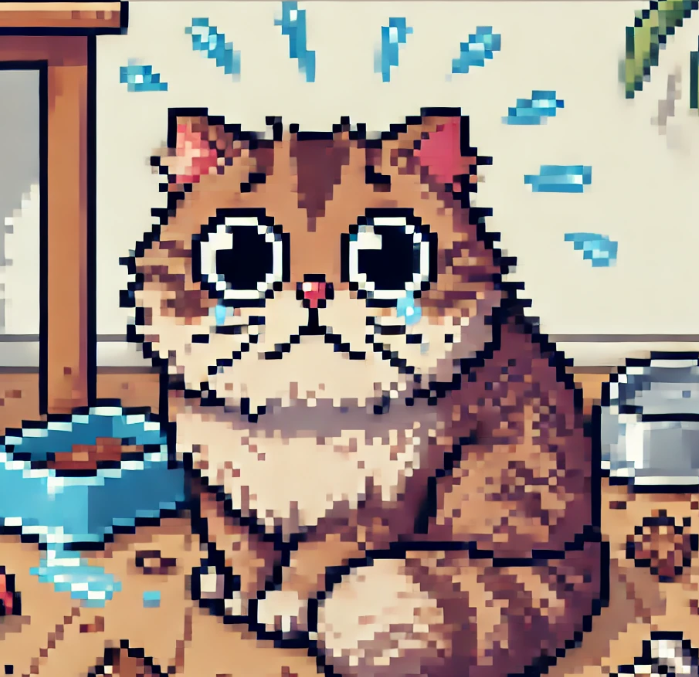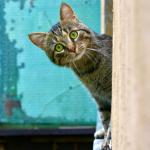
Stress and Your Cat
As cat owners, we often think of stress as something that affects humans, but did you know that your cat can experience stress in a way that deeply impacts their health? Stress in cats can manifest in surprising and serious ways, and recent research has shed new light on how stressors in a cat’s environment could be linked to various health conditions, including lower urinary tract symptoms (LUTS). In this blog, we’ll explore how stress affects your feline friend, what you can do to help, and why understanding these stressors can make a significant difference in your cat’s well-being.
What is Stress in Cats?
When we talk about stress, we’re not just talking about those obvious moments—like a sudden loud noise or a vet visit. Stress in cats can stem from a wide variety of situations. Experts define stress as a reaction to a perceived threat. For cats, this could range from moving to a new home, the introduction of a new pet, changes in their daily routine, or even subtle shifts in their environment.
Stress can be classified as mild, moderate, or severe. Mild stress, like a visit to the vet, can actually help your cat develop coping skills when handled in a calm, supportive environment. However, when stress becomes chronic or severe, it can damage your cat’s physical and emotional health.
The Connection Between Stress and Urinary Health
One of the most fascinating findings in recent feline health research is the link between stress and lower urinary tract symptoms (LUTS). These symptoms include frequent urination, blood in the urine, or even urinating outside the litter box. While infections or stones can cause these symptoms, studies suggest that stress can trigger or worsen LUTS in some cats.
Think of it this way: just like people may experience stomach issues or headaches when they’re stressed, cats can develop urinary problems. Their bodies react to stress by activating their central threat response system (CTRS), which impacts not only their mood but also their physical health. This system plays a role in various bodily functions, including urination, meaning that a stressed cat might experience urinary symptoms even without an infection.
Why Environmental Changes Matter
You might wonder how something like a change in your household environment could cause such serious symptoms. Cats are incredibly sensitive creatures. What seems like a small disruption to us—like rearranging furniture or introducing a new pet—can be a major stressor for them. In fact, researchers have found that environmental modifications can either trigger or alleviate health problems in cats, depending on how well the changes are managed.
For example, if your cat is dealing with recurrent LUTS, modifying their environment to reduce stress can make a world of difference. Simple changes like providing multiple litter boxes, creating quiet spaces, or introducing new toys can help reduce their perception of threat and increase their sense of control—key factors in stress management for cats.
The Impact of Early Life Stress
Did you know that a cat’s early life experiences can affect how they handle stress throughout their life? Research has shown that cats who experience adverse events as kittens—such as being orphaned or experiencing frequent relocations—are more likely to have a heightened response to stress as adults. This “sensitization” of their central threat response system makes them more vulnerable to health issues triggered by stress later in life.
This doesn’t mean that all cats with tough beginnings are destined for health problems, but it does highlight the importance of providing a stable, supportive environment, especially for young or rescued cats.
What You Can Do to Help Your Cat
As a pet owner, you have a unique opportunity to create an environment that fosters your cat’s emotional and physical well-being. Here are some practical ways to reduce stress and promote a healthier life for your cat:
- Create Safe Spaces: Cats love having control over their environment. Providing safe, quiet spaces where they can retreat—whether it’s a cozy nook or a high perch—can help reduce their stress levels.
- Maintain a Routine: Cats are creatures of habit, and sudden changes can lead to stress. Try to keep their feeding times, play sessions, and even interactions consistent.
- Litter Box Management: Always ensure that your cat has easy access to clean litter boxes. If you have multiple cats, providing more than one litter box can reduce competition and stress.
- Interactive Play: Keeping your cat mentally and physically stimulated with toys and interactive play can help them burn off anxious energy.
- Consider Environmental Enrichment: Add elements like scratching posts, climbing trees, or even puzzle feeders to keep your cat engaged and happy.
Join the Conversation
We’d love to hear from you! Have you noticed changes in your cat’s behavior during stressful times? What strategies have you found helpful in keeping your cat calm and healthy? Share your experiences with us in the comments below or join the conversation on social media!
Conclusion
Understanding the connection between stress and your cat’s health can go a long way in ensuring their well-being. By making small changes in your cat’s environment and paying attention to their emotional needs, you can help prevent stress-related health issues like lower urinary tract symptoms. Remember, a happy, stress-free cat is a healthy cat!




